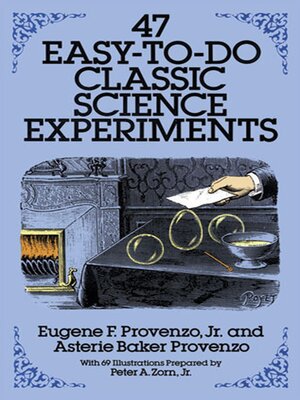47 Easy-to-Do Classic Science Experiments
ebook ∣ Dover Children's Science Books
By Eugene F. Provenzo

Sign up to save your library
With an OverDrive account, you can save your favorite libraries for at-a-glance information about availability. Find out more about OverDrive accounts.
Find this title in Libby, the library reading app by OverDrive.



Search for a digital library with this title
Title found at these libraries:
| Library Name | Distance |
|---|---|
| Loading... |
Here is a highly motivating book for grade-school students that will introduce them to many of the world's most popular (and historically significant) scientific experiments. They'll learn about gravity simply by following the acrobatic antics of an ordinary coin. By trying to blow an egg out of a cup, they'll discover the principles of air pressure. Dancing soap bubbles will help them understand the effects of static electricity, and by dropping quarters into a full glass of water without causing it to overflow, they'll study the effects of surface tension. These and over 40 other experiments have been carefully selected by noted educators Eugene and Asterie Baker Provenzo to familiarize children with classic science experiments involving optics, inertia, air pressure, magnetism, sound, topology, light, density, vibration, prisms, elasticity, gases, vacuum, perspective, geometry, centrifugal force, buoyancy, color, and much more. Some experiments, such as the optical "Newton's Rings" are hundreds of years old. Still others, like the straw lever test, are based on Greek experiments with leverage and the center of gravity — first carried out thousands of years ago. Easy-to-follow instructions and illustrations show youngsters how to perform each experiment, most of which are prefaced with historical background, a list of necessary materials and an explanation of key terms. Almost all experiments can be carried out with common household items (tissue paper, scissors, tapes, rubber balloons, pens, pencils, etc.) and can be worked at home or in the classroom to demonstrate specific scientific principles or to supplement a science-curriculum unit. Sources for all historical illustrations given in the text are listed at the end of the book.







